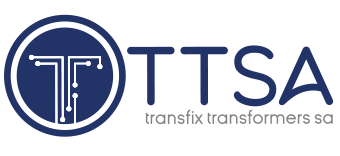South Africa’s construction and infrastructure sector enters 2026 with a rare window of opportunity. The Medium-Term Budget Policy Statement (MTBPS), delivered by Finance Minister Enoch Godongwana in October, sets out a decisive, albeit fragile, pivot towards rebuilding the country’s economic base by shifting the composition of public spending away from consumption and towards capital investment. The National Treasury’s insistence on restoring fiscal discipline is paired with an equally strong …
Posts
An operational update, released by exploration company Rhino Resources Namibia in October, reported the discovery of a high liquid-yield gas condensate during an offshore drilling campaign on Block 2914A of the Orange basin, Namibia. Commenting on the update, Rhino CEO Travis Smithard said: “[We] are delighted to announce the discovery of a high liquid-yield gas condensate in an excellent quality reservoir at the Volans-1X well.”
For a new Namibian independent power producer (IPP) or supplier working through Modified Single Buyer (MSB) registration and then stepping into Southern African Power Pool (SAPP) trading, specialist software solutions provider Enerweb’s fastest “time-to-participation” path employs a preconfigured software stack, says Enerweb chief innovation officer Gerard Van Harmelen. He notes that, with Namibia embarking on an energy transition characterised by its shift from an import-dependent system to a diversified, renewables-rich energy mix, the next decade will see an increase in solar PV and wind projects, complemented by battery energy storage systems, as well as more IPP-driven wheeling projects, and greater regional integration through SAPP.
Julie Berg will succeed Morten Henriksen as Group CEO of renewable energy company Mainstream Renewable Power from January 2026. Henriksen this week announced his decision to step down from his role as CEO to pursue other opportunities.
The hydrogen sector may have been in a hype cycle for the last few years, but the fundamentals around the global energy market have not changed – the need for clean and localised energy and a just energy transition remain, says Dr David Hart. Hart, who does work for H-ETA and ERM, spoke on a number of hydrogen-related issues at a Nedbank-hosted hydrogen roundtable held in Cape Town last week.
The Central Energy Fund (CEF) group of companies faced sceptical questioning this week from lawmakers over plans to revive the Sapref refinery in Durban and PetroSA’s gas-to-liquids (GTL) refinery in Mossel Bay. During a marathon session of the Portfolio Committee on Mineral and Petroleum Resources held to deliberate on CEF’s delayed 2024/25 annual report, CEF chairperson Ayanda Noah stressed the importance of the two refineries to the future of the group, as well as the recently formed South African National Petroleum Company (SANPC).
The UK may extend a $1-billion debt guarantee to help South Africa with its transition to a greener economy as it nears expiry without having been used. The guarantee was approved in late 2023 and is scheduled to expire at the end of the year, even as South Africa negotiates with the African Development Bank (AfDB) over a $400-million loan for municipal energy and water services, to be guaranteed under that arrangement.
The South African Photovoltaic Industry Association (SAPVIA) says the quickest and most effective way to resolve the ongoing debate on safety and compliance for small-scale embedded generation (SSEG) is to finalise the new South African National Standard (SANS) 10142-1 safety standard. SAPVIA says it has carefully considered the extensive public debates and media coverage on the safety and compliance of SSEG systems – up to 1 MVA – together with the Association of Municipal Electricity Utilities (Ameu), the Electrical Contractors Association of South Africa and the Organisation Undoing Tax Abuse.
Eskom chairperson Mteto Nyati has underlined the importance of reducing the State-owned group’s cost base as a newly constituted board takes over from the one appointed in October 2022. The outgoing board took office amid extreme levels of loadshedding and deep financial distress and oversaw the implementation of a ‘Generation Recovery Plan’, which was approved in March 2023.
The Central Energy Fund (CEF) has conveyed its regret at the sudden passing of director Unati Figlan, who also served as the chairperson of legacy entities PetroSA, Strategic Fuel Fund (SFF) and iGas. “Figlan played a defining role in strengthening governance, stabilising operations and advancing strategic alignment across the legacy entities during a critical period of transition for the CEF group,” the CEF said on November 28.
INDUSTRY NEWS
- NERSA appoints Electricity Market Advisory Forum to guide power-market reformDecember 19, 2025 - 2:04 pm
- Eskom offers more details on envisaged roles of the NTCSA and the TSODecember 18, 2025 - 11:04 am
- NTCSA says any electricity deal to salvage Mozal must ensure its financial sustainabilityDecember 17, 2025 - 3:01 pm
WHERE TO FIND US
Address
9 Yellow Street
Botshabelo Industrial Area
Botshabelo, Free State
Call / Email Us
Tel: +27 (0) 61 956 6772
Email: info@transfix.co.za
